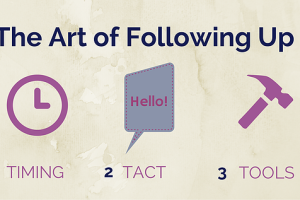Understanding and learning to think like our customers is the lifeblood of innovation. We all know that. But sometimes we forget, and even in the midst of a successful growth streak we suddenly catch ourselves wondering where to go next.
Let’s relearn some of the lessons that you may have been taught in your career, but perhaps had forgotten.
Tip #1 – Remember that you are not your customer.
Marketing consultant Lenna Garibian published an interesting study earlier this year about the digital behavioral gaps separating marketing professionals from the typical consumers they are out to reach. It turns out that, whereas 61% of marketers are Twitter followers, only 12% of digital consumers are. While 90% of marketers own a smartphone, only 51% of online consumers do.
That means a mobile, Twitter-based ad campaign would be a great way to reach marketers, but a rather poor way to reach the broad population of online consumers.
Sometimes we suffer from this error of self-generalization, offering solutions to problems that are more important to us than they are to our customers. Then we inadvertently find ourselves trying to convince consumers they have a problem, rather than meeting them with a solution at a genuine “pain point” in their lives.
If we’re going to get inside our customers’ heads, we have to set our egos aside and start thinking like they do. We have to resist making unfounded assumptions about their needs, and we have to cultivate an obsessive curiosity about the kinds of things that motivate them to act.
Tip #2 – Make your customer the boss.
Companies that think like their customers are radically customer-centric. But as Floren Robinson and Justin M. Brown summarize in this helpful article:
Achieving customer-centricity requires rethinking the way business is done. And this, in turn, requires a holistic approach that encompasses everything from analytics and insights to strategy and customer experience, from operating model design and execution to governance and transformation management.
So… Customer-centricity is essential, but it’s not necessarily intuitive. Given the evolving dynamics of customer expectations in this era of digital technology and social media, companies hoping to keep pace with their customers will have to do a couple things:
Fearlessly embrace customer feedback—particularly the criticisms.
We are sometimes reluctant to trust our customers’ instincts. But the fact is, customers often know and can articulate their needs rather well. What’s more, as this Help Scout blog highlights, they can make powerful allies in product development for those willing to garner their input and respond to their suggestions.
Integrate both customer-facing and non-customer-facing processes.
Today’s consumers resent companies whose decision-makers seem “siloed off” from the real world of their needs. We might not expect our customers to care about what goes on in the office behind the scenes, but they do. They want to know they are dealing with providers whose personnel at all levels of product delivery are invested in understanding them better.
Opening the channels of communication is a big step toward getting in your customers’ heads. Once consumers perceive your openness to hearing and acting on what they have to say, you might find them to be more transparent than you ever imagined.
Tip #3 – Walk a mile in your customer’s shoes.
Too often we forget what it’s like to be a customer. Even when we shop in the same kinds of places for the same kinds of things as our customers, we do it from a businessperson’s vantage.
We’re more likely to pay attention to other retailers’ marketing strategies and product mixes than we are to the kind of overall customer experience we’re having as we shop.
And that puts us in foreign waters when we decide to make our businesses radically customer-centric. We have no clue what our customers’ experience should be like because we’re not experiencing it the way they experience it.
Two suggestions for changing lenses on the customer experience:
Be an attentive consumer of your customer’s favorite products.
Pay special attention to the kinds of things that make it easier or more difficult for them to do business. Try noticing where the “workarounds” are taking place in the consumer experience. What inconvenient “compensating behaviors” are customers using to address shortfalls in the existing solutions to their problems? How might your company do a better job?
Shop yourself.
Make a purchase. See if your customers are able to have a seamless conversation across all of your online and offline touch points. Once we’ve tapped into the kind of experience our customers have in other areas of their lives, it pays to get in the habit of regularly checking in to make sure our own companies are consistently delivering a superior experience.
This won’t happen by simply analyzing data, though. We’ll have to play the role of consumer from time to time and actually put our own systems and personnel to the test. If you discover something amiss, you can bet your customers will, too—whether they ever actually complain about it or not.
Tip #4 – Spend time anticipating your customer’s future needs.
Understanding your customers’ present needs and the ways they are trying to meet them is terrific, but it’s not enough. True innovators are constantly leveraging their consumer knowledge to forecast tomorrow’s needs. That’s because they learn right alongside their customers, maintaining an open dialogue about the sorts of things that bother and excite them. They envision alternative “futures” for their customers and develop solutions to problems their competitors have not yet thought to address.
To get started, see how well you can answer these questions about your customer:
Why are my customers interested in the kinds of things they read?
People read about the things that speak to their needs. New parents read parenting articles. High school seniors read about college life. Engineers read trade magazines.
Too often we want to know what our customers are reading in order to take advantage of some new, more targeted medium for advertising and promotion; but forward-leaning companies pay more attention to what the literature reveals about their customers’ evolving needs.
What are the most vexing questions my customers are trying to answer right now?
What problems are they struggling to solve?
Companies that make a big impact in their customers’ lives are those who pioneer new solutions—or make significant improvements to existing solutions. Customers get excited about new products that perfectly fit their lifestyles and make routine obstacles easier to navigate.
How are your customers’ behaviors changing over time?
This is the biggie. It’s tempting to rest on our laurels whenever we come up with a tremendously successful product idea, naively assuming our customers will remain loyal so long as we deliver the same or better quality of service over and over again.
But that’s not how the real world works. People grow and change, and so do their desires. Forward-leaning companies are those who want to be on the leading edge, shaping the sorts of things that will define customer satisfaction months or years down the road. You can’t do this unless you’re a keen observer of how your customer’s behavior is evolving.
Getting inside our customers’ heads is perhaps the toughest aspect of staying in business. It demands constant vigilance and insatiable curiosity. This is true whether we’re just starting out with a new company or celebrating decades of success in the field.
Knowing and understanding our customers—being able to view the world through their lens—is something we can never become complacent about.








